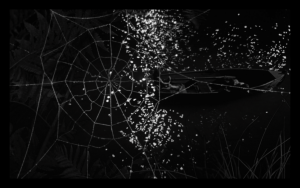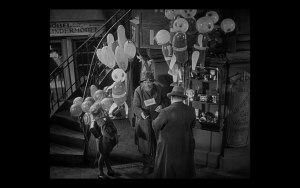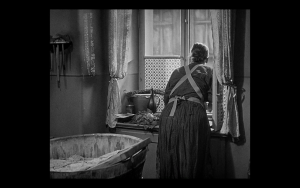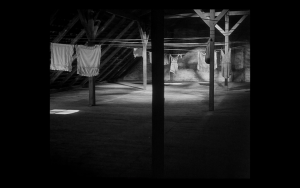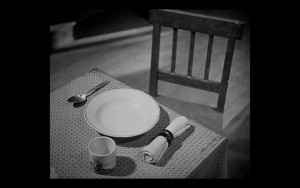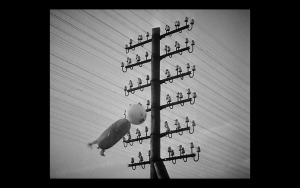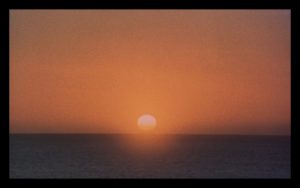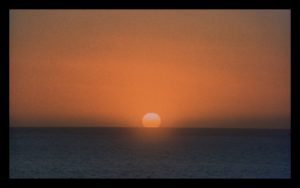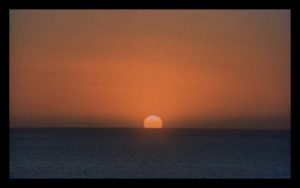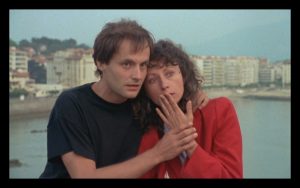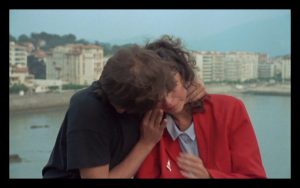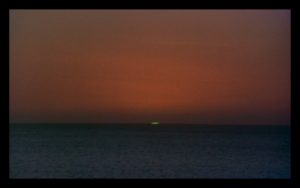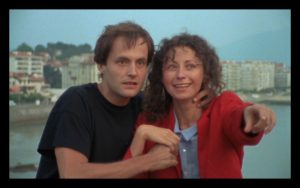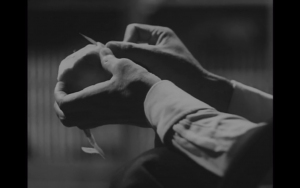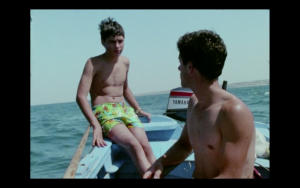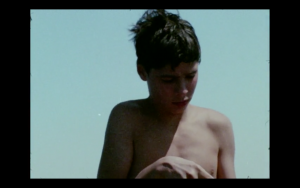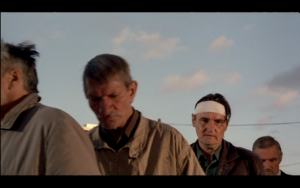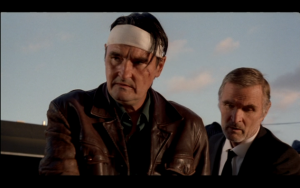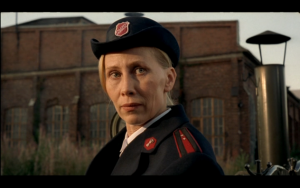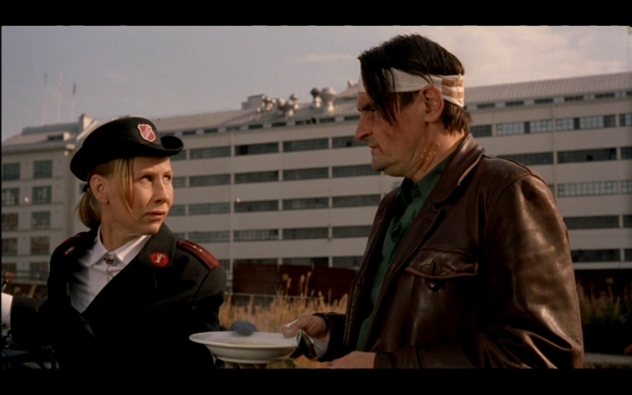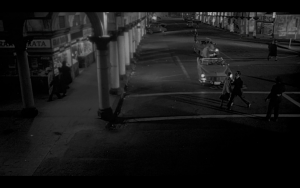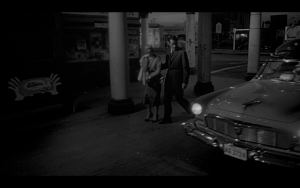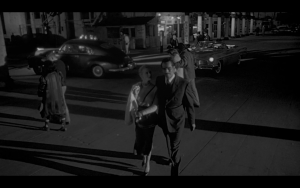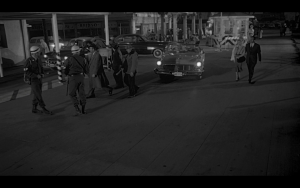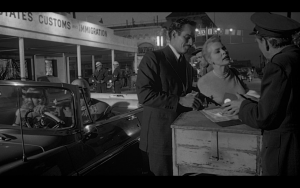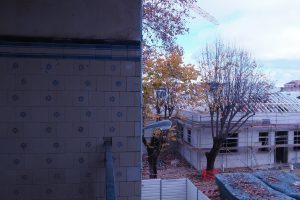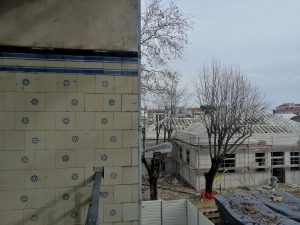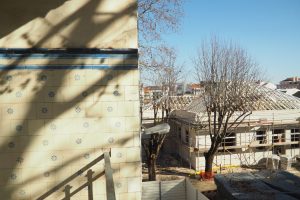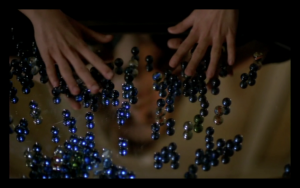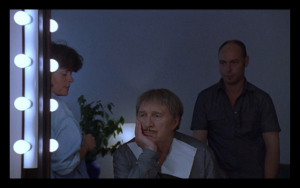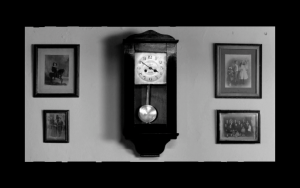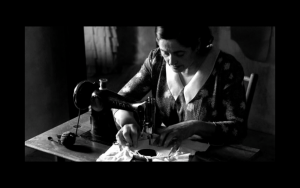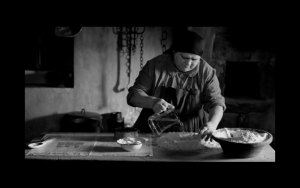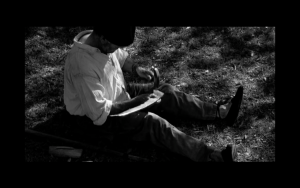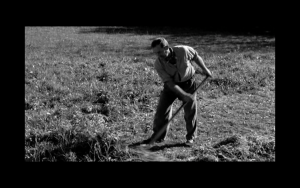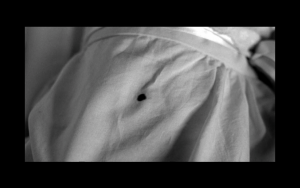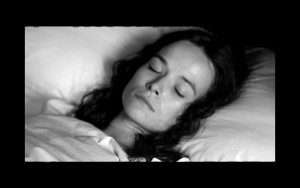Conversation around excerpt from The night of the hunter by Charles Laughton

O excerto pode-se dividir em dois blocos: um em que os meninos fogem em direção ao barco e outro em que eles estão no barco a descer o rio. A velocidade da ação, os movimentos dos personagens e a música, num e noutro, são muito diferentes.
No primeiro bloco, a música é agitada, os planos são mais curtos e passamos do plano dos meninos a andarem – é incrível porque eles andam devagar, com cuidado – e o plano do homem a vir na direção deles – com movimentos bruscos. Vemos os meninos e vemos o homem, vemos os meninos e vemos o homem, até os vermos juntos no mesmo plano (o barco a afastar-se do homem). Parece que acontecem muitas coisas em pouco tempo.
The excerpt can be divided into two blocks: one in which the kids flee towards the
boat and another in which they are on the boat going down the river. The speed of the action, the character movements and music, in each other, are very different.
In the first block, the music is agitated, the plans are shorter and we move beyond the plan of the boys to walk – it’s amazing because they walk slowly, carefully – and the
man coming towards them – with sudden movements. We see the kids and we see the man, until we see them together on the same plane (the boat away from man). It seems like a lot of things happen in a short time.

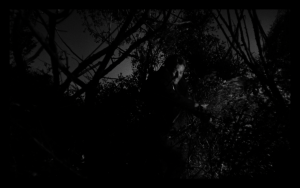
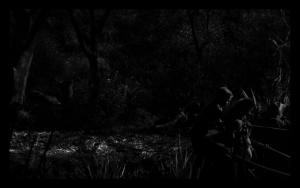



No segundo bloco parece que acontecem menos coisas, mas passa mais tempo: estamos sempre com os meninos no barco, o barco desloca-se sempre à mesma velocidade, eles estão parados, deixam-se levar pela corrente, até adormecem. A música é uma canção de embalar, cantada do princípio ao fim. O medo, que primeiro é um crescendo, fica a pairar, mas a dado momento, como os planos são tão longos, já nem sentimos medo.
In the second block it seems that less things happen, but more time passes: we are always with the kids on the boat, the boat always moves at the same speed, they are stopped, let themselves be carried by the current, until they fall asleep. Music is a song to pack, sung from beginning to end. Fear, which is a build-up first, is hover, but at a given moment, as the plans are so long, we are no longer even afraid
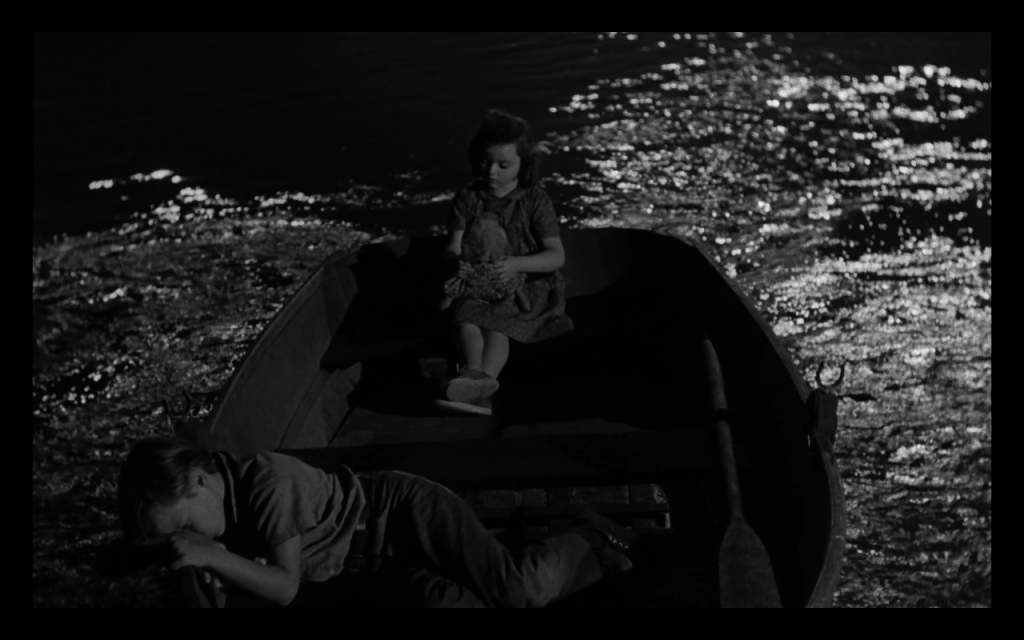
Há uma tensão no primeiro que depois desaparece no segundo, fica tudo calmo. Vemos o céu com estrelas, o luar, o rio, uma teia de aranha, um sapo. A história, contada no primeiro bloco, fica suspensa e dá a sensação que voltamos à “normalidade”, ou seja, que não vai acontecer nada de extraordinário, que as coisas vão acontecer como sempre vão acontecendo ao longo do tempo. E nós, espectadores, podemos relaxar, ficar só a olhar.
There is a tension in the first that then disappears in the second, everything is calm. We see the sky with stars, moonlight, the river, a spider web, a frog. The story, told in the first block, is suspended and gives the feeling that we are back to “normality”, that is, that it will not nothing extraordinary happens, that things will happen as they always will happening over time. And we, the spectators, can relax, just looking.
